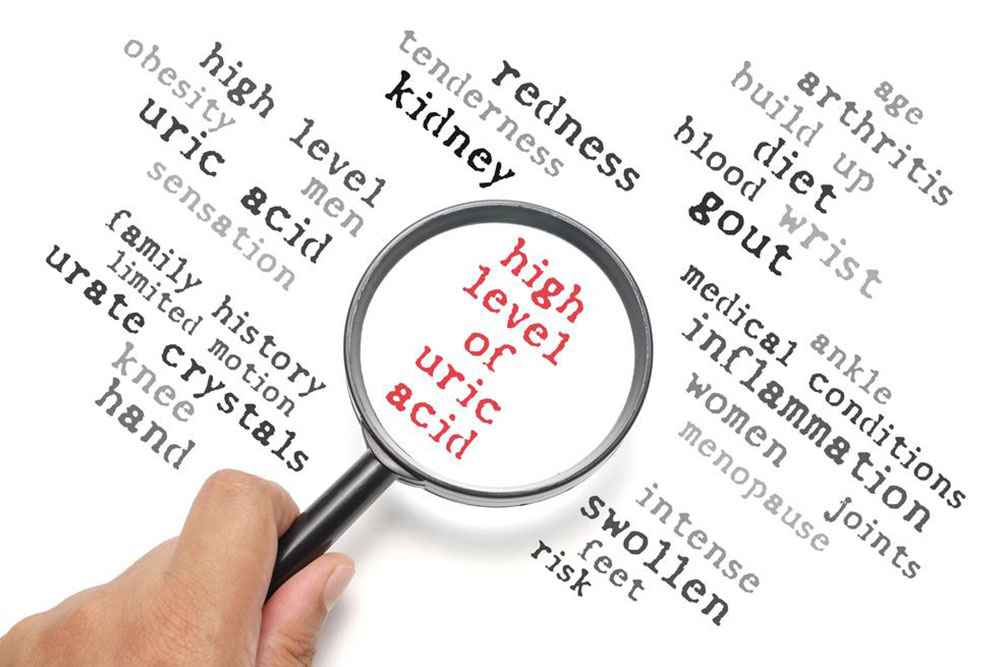Comprehensive Guide to Recognizing and Managing High Uric Acid Levels for Better Health
This comprehensive guide details the causes, symptoms, and management strategies for high uric acid levels. Emphasizing lifestyle modifications, dietary tips, and medical interventions, it offers valuable insights to prevent gout and related health issues effectively. Understanding uric acid's role in overall health can help individuals take proactive steps toward maintaining optimal metabolic balance and reducing long-term risks.

Comprehensive Guide to Recognizing and Managing High Uric Acid Levels for Better Health
Uric acid, a natural waste product formed during the breakdown of purines in the body, plays an essential role in maintaining metabolic balance. However, when uric acid levels become elevated—a condition known as hyperuricemia—it can lead to a range of health problems that significantly impact quality of life. Elevated uric acid levels are increasingly recognized as a critical health concern, especially given their potential to cause gout, kidney stones, and even more serious conditions such as kidney failure and cardiovascular diseases. Understanding the causes, risk factors, symptoms, and strategic management approaches of hyperuricemia is vital for individuals aiming to maintain optimal health and prevent potentially debilitating complications.
Research over recent years has underscored the strong links between elevated uric acid levels and various systemic health issues. Not only does hyperuricemia contribute to joint inflammation and pain characteristic of gout, but it has also been associated with the development of hypertension, atherosclerosis, and metabolic syndrome. The underlying mechanisms involve complex metabolic pathways, with the body either producing excess uric acid or failing to eliminate it efficiently through the kidneys. Recognizing these underlying causes and adopting effective preventive and management strategies are critical steps toward reducing the health risks associated with high uric acid levels.
Causes and Contributing Factors of Elevated Uric Acid
The primary causes of hyperuricemia are an imbalance between uric acid production and elimination. Several factors influence this balance:
Dietary Factors: Consuming foods high in purines—such as red meats, organ meats, seafood, and certain legumes—can elevate uric acid levels. Additionally, diets rich in fructose and processed foods contribute to increased uric acid production.
Genetic Predisposition: A family history of hyperuricemia or gout increases susceptibility. Certain genetic mutations affect how the kidneys process uric acid.
Renal Function: Impaired kidney function limits uric acid excretion, leading to accumulation. Conditions such as chronic kidney disease exacerbate this issue.
Obesity and Overweight: Excess body weight increases uric acid production and reduces renal clearance, creating a two-pronged risk factor.
Alcohol Consumption: Alcohol, especially beer and spirits, hampers uric acid excretion and increases production, raising the likelihood of hyperuricemia.
Medical Conditions and Comorbidities: Thyroid disorders, metabolic syndrome, hypertension, and certain medications (like diuretics) can influence uric acid levels.
Sugary and Processed Foods: Excessive intake of sugar-laden foods, especially those containing high-fructose corn syrup, significantly elevates uric acid levels.
Symptoms and Early Indicators of High Uric Acid
High uric acid levels often remain asymptomatic for extended periods but can manifest through distinct signs and symptoms. Recognizing these early can facilitate prompt intervention:
Joint Pain and Swelling: Sudden, intense pain in the big toe, ankles, knees, or heels, often accompanied by swelling, redness, and warmth. These episodes are characteristic of gout.
Tophi Formation: Under chronic hyperuricemia, deposits of uric acid crystals may form lumps called tophi under the skin, typically around joints and in soft tissues.
Kidney Stones: The crystallization of uric acid in the kidneys can cause severe pain, blood in urine, and in some cases, infection or kidney damage.
Lethargy and Discomfort: Though less specific, general fatigue and discomfort can be linked to elevated uric acid and underlying metabolic disruptions.
Routine blood tests measuring serum uric acid levels are essential for diagnosing hyperuricemia, especially in patients with risk factors or early symptoms. Early detection allows for effective management, reducing the risk of developing gout and other serious health issues.
Strategies for Managing and Preventing Elevated Uric Acid Levels
Effective management of high uric acid involves a comprehensive approach combining lifestyle modifications, dietary adjustments, and, when necessary, medication. The primary goal is to reduce uric acid levels to prevent crystal formation and associated complications.
Dietary Changes
Diet plays a pivotal role. Consider the following dietary recommendations:
Reduce Purine-Rich Foods: Limit intake of red meats, organ meats, shellfish, and certain fish like sardines and mackerel.
Avoid Sugary Foods and Beverages: Cut down on foods and drinks with high fructose corn syrup, including sodas, candies, and baked goods.
Limit Alcohol Intake: Especially beer and spirits, as they significantly impair uric acid excretion.
Include Beneficial Foods: Incorporate cherries, berries, lemons, and foods rich in antioxidants, which can help lower uric acid levels. Fresh vegetables, organic eggs, flaxseeds, and green tea are excellent choices.
Increase Hydration: Drinking plenty of water supports kidney function and helps flush excess uric acid from the body.
Lifestyle Modifications
Beyond diet, lifestyle adjustments dramatically impact uric acid management:
Maintain a Healthy Weight: Weight loss reduces uric acid production and alleviates pressure on joints and kidneys.
Exercise Regularly: Engaging in moderate physical activity can improve overall metabolic health, but avoid overexertion, which can temporarily increase uric acid levels.
Stay Well-Hydrated: Consistent water intake is essential—aim for at least 8-10 glasses daily.
Medication Compliance: For those prescribed medications such as allopurinol or febuxostat, adhere to prescribed schedules to maintain optimal uric acid levels.
Monitoring and Medical Intervention
Routine blood tests are critical for tracking uric acid levels, especially in patients with risk factors or previous gout attacks. In some cases, healthcare providers may recommend medications to lower uric acid, control inflammation, or prevent crystal formation—these include urate-lowering therapies, anti-inflammatory drugs, and pain management medications.
Furthermore, addressing underlying health issues like hypertension, diabetes, and kidney disease is essential for comprehensive management. Regular check-ups and blood tests help keep uric acid in check and prevent long-term complications.
Conclusion: Achieving Long-Term Uric Acid Balance
Managing elevated uric acid levels is essential for maintaining overall health and preventing serious conditions such as gout, kidney stones, and cardiovascular diseases. A proactive approach involving dietary management, lifestyle changes, regular monitoring, and medical treatment when necessary can significantly reduce health risks associated with hyperuricemia. Emphasizing early diagnosis and persistent management ensures a healthier, more comfortable life free from the pain and complications linked with high uric acid levels. Remember, maintaining a balanced diet, staying hydrated, and leading an active lifestyle are the cornerstones of controlling uric acid and promoting well-being.





